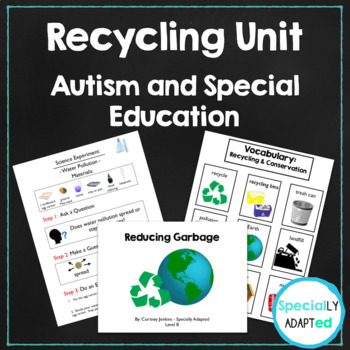Special Education & Autism Science Unit- Recycling and Conservation
- Zip
What educators are saying
Description
This recycling and conservation science unit is specifically designed for students in special education and autism classrooms. This unit will help you easily provide standards-based science content on a level appropriate for your students. This unit provides ready-to-go activities for the classroom in addition to homework that easily aligns with what you are doing in class.
Datasheets are included to make your life easier, they will help you keep a measurable record of student progress and understanding of vocabulary terms.
Included in this unit:
- 2 Leveled Non-fiction books
- Symbol Supported Vocabulary Words and Handouts
- Symbol Support Vocabulary Cards with matching words and definitions
- Data sheets
- Vocabulary Test (Expressive and Receptive)
- Vocabulary Matching Game
- Keynote and Powerpoint Templates for teaching about pollution
- Science Experiment Lab Worksheets
- Coloring worksheet
Leveled Worksheets:
- Vocabulary Matching Worksheet- symbol to word
- Vocabulary Matching Worksheet- symbol to symbol
- Vocabulary Matching Worksheet- symbol to definition
- Write Vocabulary words worksheet (with words to copy)
- Write Vocabulary words worksheet (without words to copy)
- Write Vocabulary words worksheet (with words to trace)
Math Connection:
- Count, Tally, and Graph Activity
Lifeskills
- Trash or Recycling Task Cards
+ List of Additional Resources to supplement your unit





